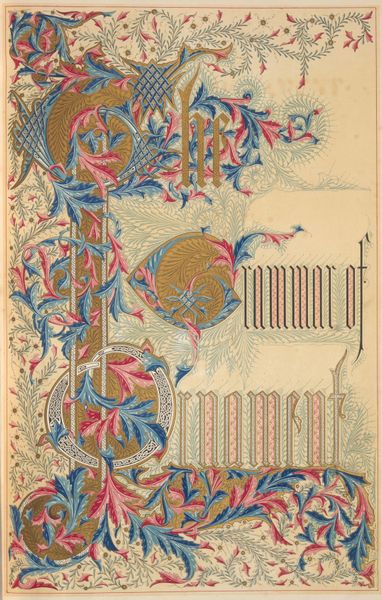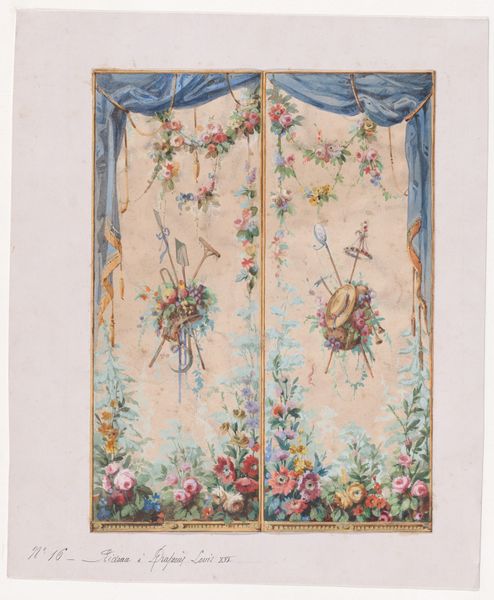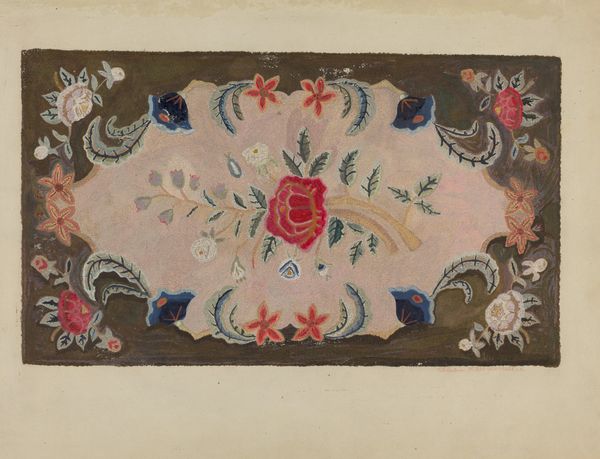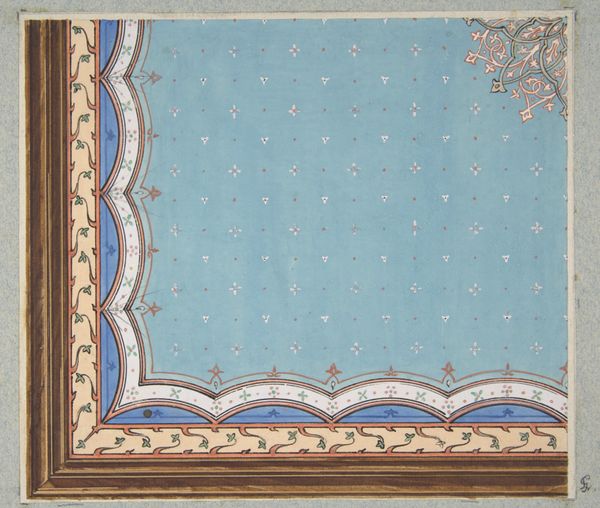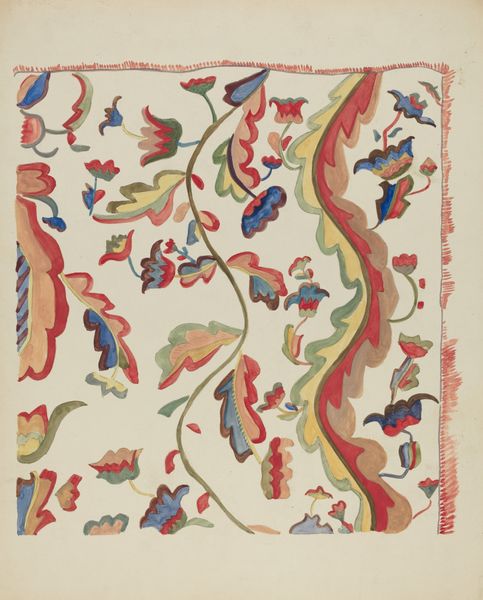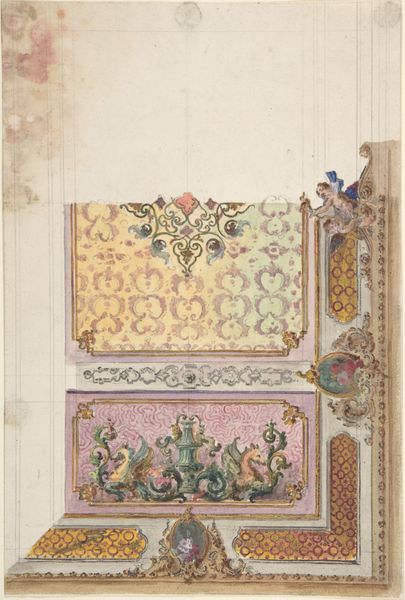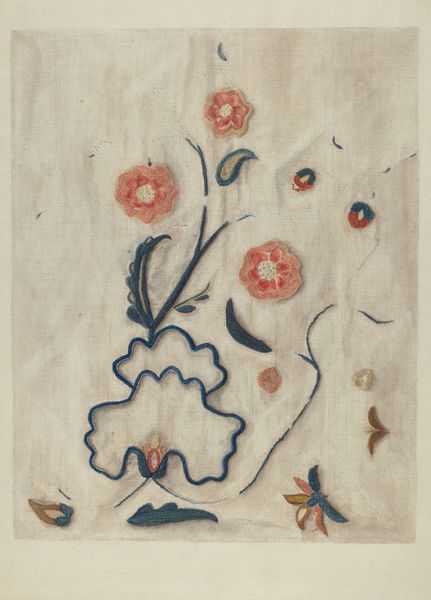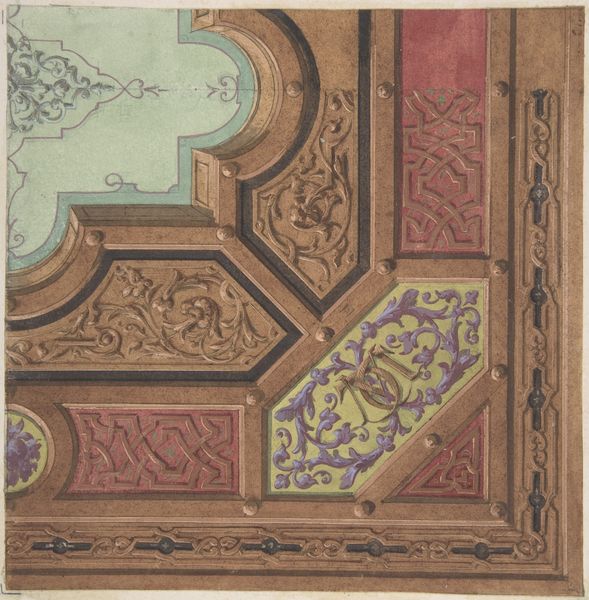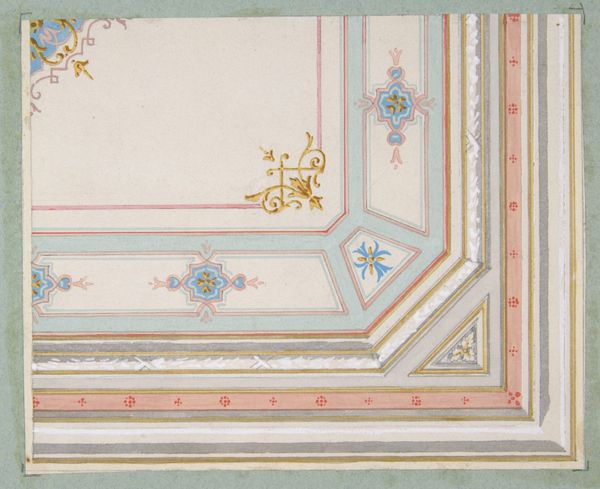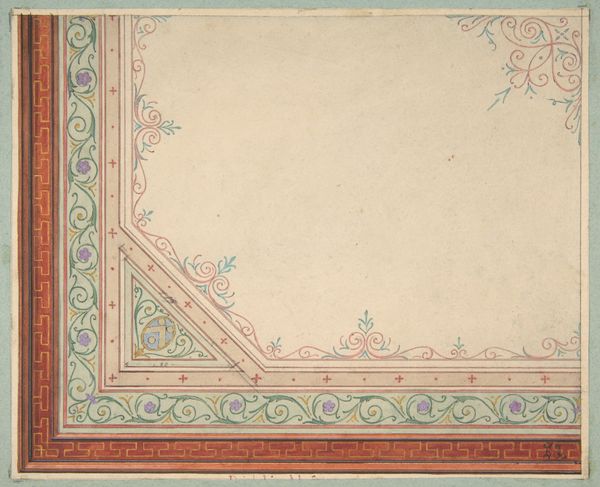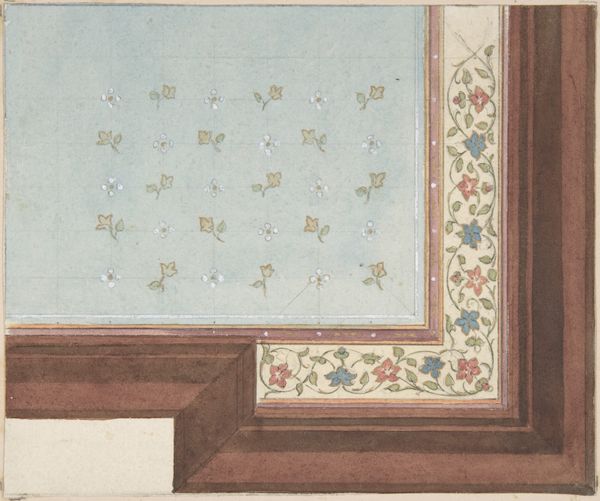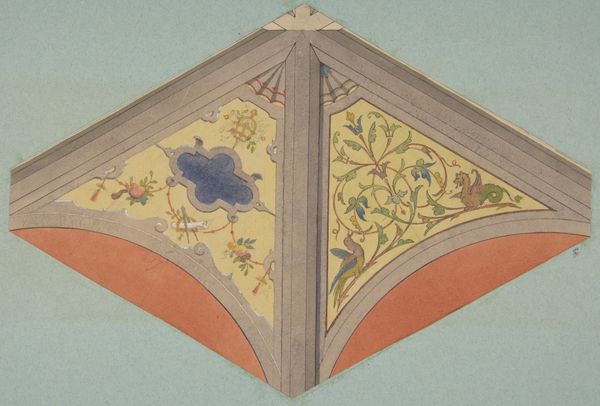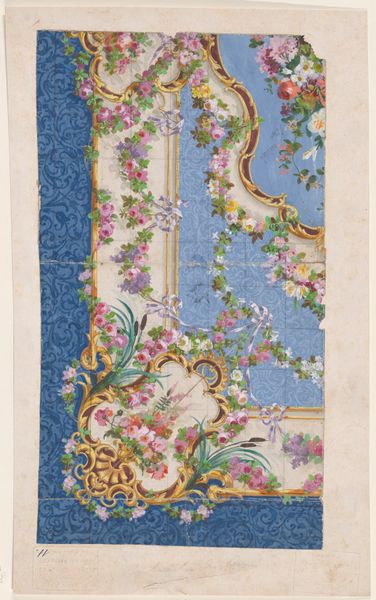
drawing, print, watercolor
#
drawing
#
water colours
# print
#
watercolor
#
decorative-art
Dimensions: sheet: 10 3/8 x 10 5/16 in. (26.4 x 26.2 cm)
Copyright: Public Domain
Curator: What a fascinating peek into design history. This artwork, titled "Two Alternate Decorative Designs for Ceiling," likely hails from the 1800s. The anonymous artist rendered it with watercolor and print techniques. It resides now in the collection of the Metropolitan Museum of Art. What's your initial take? Editor: My first impression is that this design feels strangely soothing yet artificial. The color palette is soft—blues and mauves. But the juxtaposition of those naturalistic floral elements with rigid, geometric backgrounds feels oddly unsettling. What underlying currents were they tapping into, I wonder? Curator: I agree about the disquieting effect. The decorative arts of this era are steeped in symbolism that we may not immediately grasp today. The floral patterns, for example, likely carried coded meanings relating to love, beauty, or status within a highly mannered society. The overall impression, though, speaks volumes about cultural aspiration. Editor: You know, considering this was intended for a ceiling, that encoded message becomes quite literal – an aspirational gaze toward values made manifest above one’s head! Were such elaborate designs common at the time, signifying social clout or even a family’s commitment to refined taste? Curator: Exactly! Interior decoration, especially in domestic settings, served as a potent indicator of wealth and cultural refinement. A space designed in this manner sends silent yet potent signals about its inhabitants. I see traces of chinoiserie, which reflects not only the taste for Eastern art, but speaks of colonialism and appropriation of Eastern traditions that was a part of everyday life at the time. Editor: The presence of chinoiserie certainly adds a layer of political complexity, turning this piece from a seemingly harmless design into an emblem of historical power dynamics. Considering that aspect, what do we make of its place now within a museum like the Met? Curator: Its location in a major museum means it takes on new symbolism. It goes from private display of taste and wealth, to being recontextualized and placed into the cultural record to make visible trends, tastes, values, and power structures in past societies. Editor: So, from private aspiration to public education, which really underscores the layered nature of meaning embedded in even the most 'decorative' arts. Curator: Precisely. What was once simply "décor" now actively engages with the complexities of cultural memory. Editor: Quite so, it compels us to read beneath the surface of these attractive floral designs and geometrical backdrops.
Comments
No comments
Be the first to comment and join the conversation on the ultimate creative platform.
